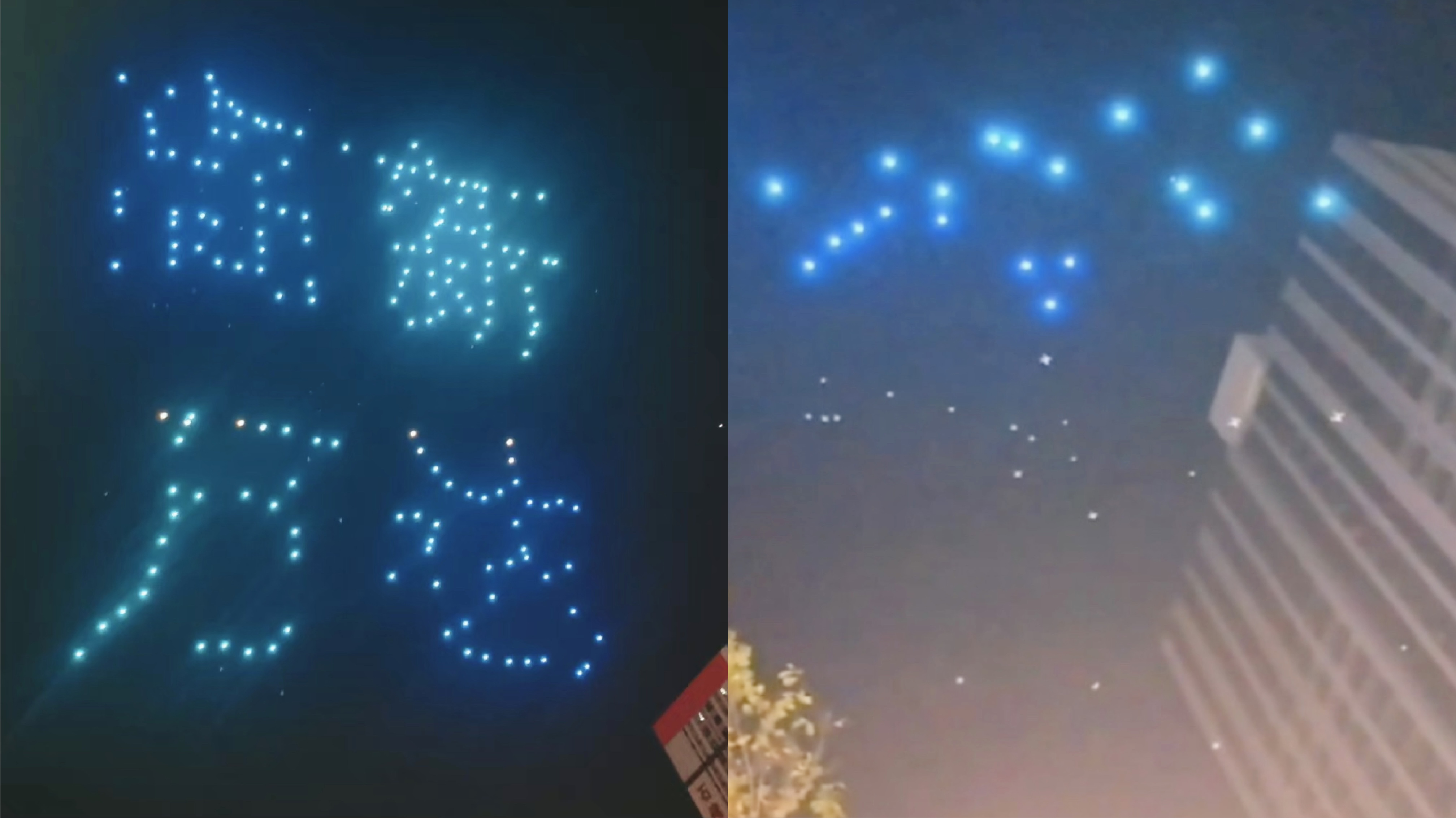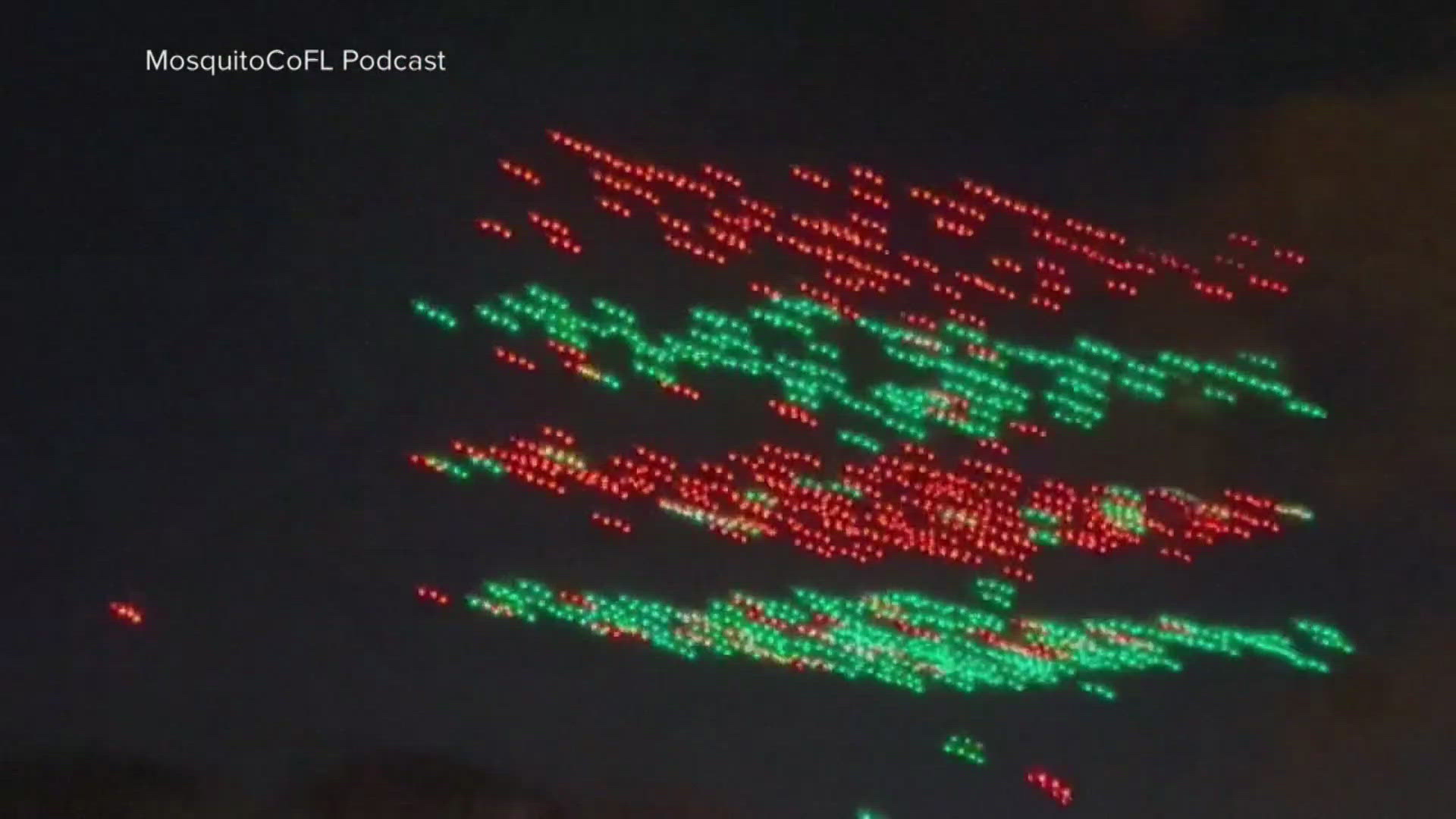Drone show crash: These spectacular displays of light and technology can sometimes end in disaster. From minor glitches to catastrophic failures, understanding the causes and consequences of drone show crashes is crucial for ensuring future safety and preventing accidents. This guide explores the various factors contributing to these incidents, examining technical malfunctions, human error, and environmental influences.
We’ll delve into specific examples, analyze safety protocols, and investigate technological advancements aimed at mitigating risks. We’ll also look at case studies of past crashes to understand the lessons learned and the path toward safer, more reliable drone shows. Get ready to explore the exciting—and sometimes perilous—world of aerial light shows.
Drone Show Crash Analysis
Drone shows, while spectacular, carry inherent risks. Understanding the various factors contributing to crashes is crucial for improving safety and preventing future incidents. This article delves into the types of crashes, their causes, safety protocols, consequences, technological advancements, notable case studies, and the future of drone show safety.
Types of Drone Show Crashes

Drone show crashes can be broadly categorized into three main types: technical malfunctions, human error, and environmental factors. Each category encompasses a range of specific issues that can lead to accidents.
Drone show crashes are unfortunately a thing, highlighting the need for meticulous planning and safety protocols. To see what a well-executed show looks like, check out the amazing visuals from a past florida drone show. Learning from both successes and failures helps improve the technology and ensures future drone shows are spectacular and safe.
| Crash Type | Description | Example | Frequency/Severity |
|---|---|---|---|
| Technical Malfunction | Failures in drone hardware or software. | GPS signal loss causing a drone to veer off course and collide with another drone or an obstacle. | Moderate Frequency, High Severity (depending on the scale of the failure) |
| Human Error | Mistakes made by pilots, planners, or ground crew. | Pilot misjudging distance, leading to a collision. | High Frequency, Variable Severity |
| Environmental Factors | Adverse weather conditions affecting drone performance. | Strong winds causing drones to lose control and crash. | Low Frequency, High Severity (depending on weather conditions) |
Causes of Drone Show Crashes
Several factors contribute to drone show crashes, including technical issues, human errors, and environmental influences. Addressing these factors is critical for improving safety.
- Technical Issues: GPS failure, battery malfunction, motor failure, software glitches, communication signal loss.
- Human Factors: Pilot error (poor flying skills, lack of situational awareness), inadequate pre-flight checks, poor show planning (lack of redundancy, insufficient safety margins), insufficient training, inadequate communication between team members.
- Environmental Factors: Strong winds, rain, fog, extreme temperatures, unexpected obstacles (birds, other aircraft).
Safety Protocols and Regulations
Robust safety protocols and regulations are essential for minimizing the risk of drone show crashes. These protocols cover various aspects of drone operation, from pre-flight checks to emergency procedures.
- Pre-flight checks: Thorough inspection of drones, batteries, and communication systems.
- Emergency procedures: Defined protocols for handling unexpected events, such as loss of control or communication failure. This includes emergency landing procedures and fail-safes.
- Airspace management: Coordination with air traffic control and other airspace users to ensure safe operations.
- Redundancy systems: Employing backup systems to mitigate the impact of single-point failures.
- Pilot training and certification: Ensuring that pilots are adequately trained and certified to operate drones safely.
Regulations vary across countries and regions, but generally cover aspects like pilot licensing, registration of drones, operational limitations, and airspace restrictions.
Drone show crashes are becoming more common, unfortunately. Proper planning and safety protocols are crucial to avoid such incidents. A recent example highlighting the importance of safety is this devastating drone crash in Paris , which underscores the need for rigorous testing and redundancy in drone show operations. Learning from these events is key to ensuring future drone shows are both spectacular and safe.
Consequences of Drone Show Crashes
Drone show crashes can have significant consequences, ranging from minor damage to severe injuries and reputational harm. Understanding these potential outcomes is essential for proactive risk management.
| Consequence Type | Description | Example | Severity |
|---|---|---|---|
| Property Damage | Damage to drones, equipment, or surrounding property. | Damaged drones requiring expensive repairs or replacement. | Low to High, depending on the extent of the damage |
| Injuries | Physical harm to spectators, pilots, or bystanders. | Injuries caused by falling drones or debris. | Low to Critical |
| Reputational Harm | Negative impact on the reputation of the show organizers or involved parties. | Loss of future contracts due to safety concerns. | Medium to High |
| Legal Repercussions | Fines, lawsuits, and legal penalties. | Legal action from injured parties or property owners. | Medium to High |
Technological Advancements for Enhanced Safety, Drone show crash

Technological advancements are continuously improving the safety of drone shows. These advancements focus on improving reliability, redundancy, and autonomous capabilities.
- Redundancy systems: Multiple GPS receivers, backup power sources, and fail-safe mechanisms.
- Advanced sensors: Obstacle avoidance systems, proximity sensors, and collision detection technology.
- Improved communication protocols: Enhanced data transmission and signal reliability to prevent communication failures.
- AI and machine learning: Autonomous flight control, real-time risk assessment, and predictive maintenance.
- Real-time monitoring and data analysis: Tracking drone performance, identifying potential issues, and improving operational efficiency.
Case Studies of Notable Drone Show Crashes

Analyzing past drone show crashes provides valuable insights into the causes of accidents and potential improvements for future safety.
- Case Study 1: A large-scale drone show experienced a cascading failure where a single drone malfunction triggered a chain reaction, resulting in multiple crashes. The visualization: Imagine a flock of birds suddenly scattering in panic, with several falling from the sky in different directions. The root cause was identified as a software glitch affecting multiple drones simultaneously. The consequence included significant property damage to the drones and reputational damage to the organizers.
Drone show crashes are becoming more common, unfortunately. These spectacular displays rely on precise coordination, and even a small malfunction can cause a major incident. For example, check out this news story about a similar issue: drone crash in paris , which highlights the importance of rigorous safety protocols. Learning from these incidents is key to improving drone show safety and preventing future mishaps.
- Case Study 2: Unexpected high winds caused several drones to lose control and crash into each other during a nighttime show. Visualization: Picture a sudden gust of wind sweeping across a field, throwing lightweight objects into disarray. The resulting crash involved a significant number of drones and caused a considerable amount of damage. The root cause was the lack of adequate wind monitoring and contingency plans.
- Case Study 3: Pilot error during a complex maneuver resulted in a drone collision. Visualization: Envision a single drone veering unexpectedly off course during a choreographed sequence, colliding with another drone in mid-air. The aftermath included a significant number of damaged drones. The root cause was identified as inadequate pilot training and insufficient pre-flight checks.
Future of Drone Show Safety
The future of drone show safety hinges on continued technological advancements and robust regulatory frameworks. These factors will play a crucial role in making drone shows safer and more reliable.
A future safety protocol for large-scale drone shows might incorporate:
- Mandatory use of autonomous flight systems with advanced obstacle avoidance.
- Real-time weather monitoring and dynamic show adjustments.
- Enhanced communication protocols with fail-safe mechanisms.
- Stringent pilot training and certification programs.
- Regular safety audits and inspections.
Closing Summary

Ultimately, preventing drone show crashes requires a multi-faceted approach. From rigorous pre-flight checks and adherence to safety regulations to embracing cutting-edge technology and fostering a culture of continuous improvement, we can minimize risks and maximize the breathtaking potential of drone light shows. The future of these spectacular events hinges on a commitment to safety and innovation, ensuring that the dazzling displays continue to amaze audiences worldwide without incident.
Questions and Answers: Drone Show Crash
What is the average cost of a drone show?
Costs vary wildly depending on the scale, duration, and complexity of the show, ranging from a few thousand to hundreds of thousands of dollars.
How many drones are typically used in a large-scale show?
Large-scale shows can involve hundreds, or even thousands, of drones working in synchronization.
What happens to the drones after a crash?
Depending on the extent of the damage, drones may be repairable, salvaged for parts, or completely written off.
Are drone show operators insured?
Reputable operators carry comprehensive insurance to cover potential damages and liabilities.